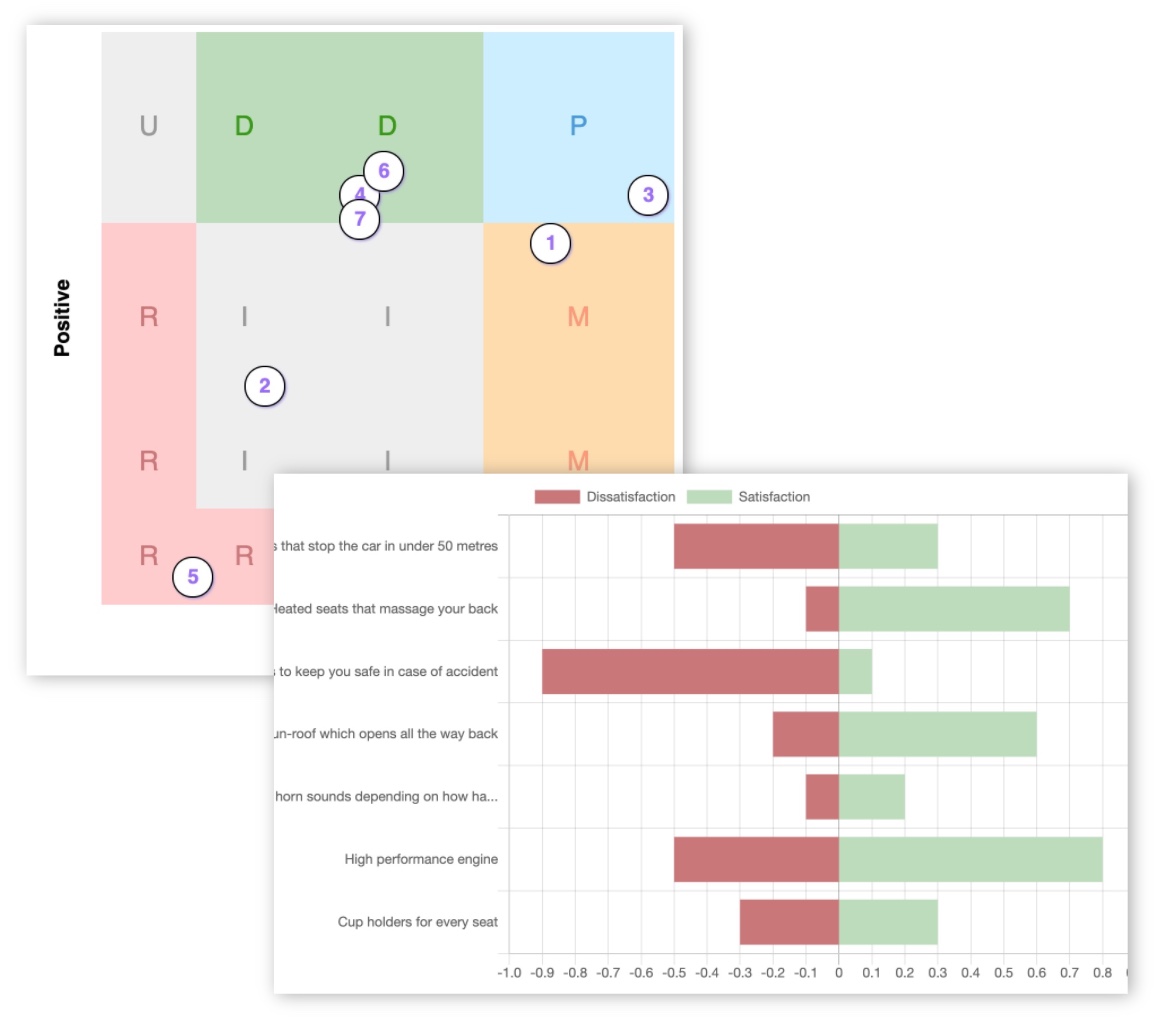Using Kano outside of tech and software - it still works!

Kano analysis techniques are used to understand customer preferences and satisfaction with products or services. It is commonly used in the fields of product development and marketing to help technology companies identify which features of their product are most important to customers, and how to prioritize the development of those features.
In the technology industry, a company may use the Kano Model to survey customers and determine which features of their upcoming SaaS product or hardware device are most important to them. The company can then prioritize the development of those features and incorporate them into their product roadmap.
But it’s not only software or IT companies that use Kano. It’s used all over the place!
In the automotive industry, a car manufacturer may use the Kano Model to survey customers and understand their preferences for different car features, such as fuel efficiency, safety, colour, shape, driver assist and performance. The manufacturer can then use this information to design cars that better meet the needs of their customers.
In the consumer goods industry, a company that makes household products may use the Kano Model to survey customers and understand their preferences for different product features, such as packaging, sustainability, chemical toxicity, aromas, and cleaning performance. The company can then use this information to design products that are more appealing to their customers.
In the healthcare industry, hospitals and other healthcare providers have used the Kano Model to survey patients and understand their preferences for different aspects of their care, such as wait times, cleanliness, bedside manner, hospital decor, and the quality of medical staff. This information can then be used to improve the quality of care and better meet the needs of patients.
In the financial services industry, banks and other financial institutions have used the Kano Model to survey customers and understand their preferences for different banking services, such as online banking, mobile apps, types of credit, personalised financial advice and customer support. This information can then be used to improve the quality of these services and better meet the needs of customers.
In the hospitality industry, hotels and other providers of hospitality services have used the Kano Model to survey guests and understand their preferences for different aspects of their stay, such as room comfort, cleanliness, amenities, decor, temperature, and the quality of front desk service. This information can then be used to improve the quality of the guest experience and better meet the needs of customers.
In the retail industry, companies that sell products in brick-and-mortar stores have used the Kano Model to survey shoppers and understand their preferences for different aspects of the shopping experience, such as store layout, ambient music, lighting, product selection, shopping cart size / quantity, and manufacturing quality. This information can then be used to improve the shopping experience and better meet the needs of customers.
In the field of human resources (HR) Kano can be used to survey employees and understand their preferences for different aspects of their work experience, such as work-life balance, opportunities for professional development, and the quality of leadership. This information can then be used to improve the work experience and better meet the needs of employees. Additionally, the Kano Model can be used to understand employee preferences for different benefits and perks, such as health insurance, retirement plans, and paid time off. This can help companies design and offer benefit packages that are more appealing to their employees and better meet their needs.
In the education industry, schools and universities have used the Kano Model to survey students and understand their preferences for different aspects of their learning experience, such as the quality of teaching, the availability of resources, timetables, lesson content, subjects, campus facilities and the support provided by staff. This information can then be used to improve the learning experience and better meet the needs of students.
In the sports and fitness industry, companies that produce sports equipment or offer fitness services have used the Kano Model to survey customers and understand their preferences for different product or service features, such as durability, performance, and comfort. This information can then be used to design products or services that better meet the needs of customers.
In the transportation industry, companies that provide transportation services, such as airlines, trains, or buses, have used the Kano Model to survey passengers and understand their preferences for different aspects of their travel experience, such as customer service from the driver, the availability of amenities, the type of vehicle, speed, journey time, and the comfort of the ride. This information can then be used to improve the travel experience and better meet the needs of passengers.
Overall, the Kano Model can be applied in a wide variety of industries and can be useful for any company or organization that wants to better understand the needs and preferences of its customers or clients. Anywhere you have a product or service, you can apply Kano to see what parts of that product or service your customers value the most.
Kano Model surveys are an amazing tool for validating your ideas and your assumptions. Click the button below to get started:
Create your first survey now

 Give Feedback
Give Feedback
